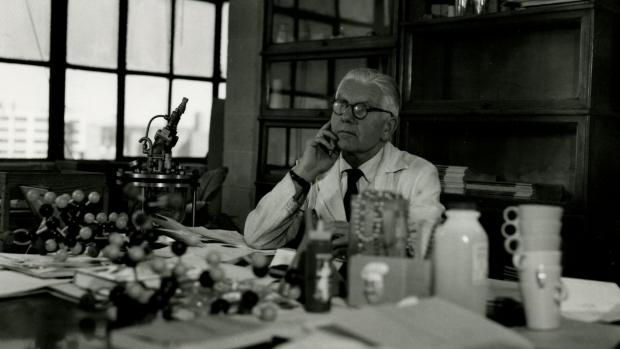During the Second World War, the non-military use of platinum was banned. It was deemed as a strategic metal important in warfare. But how was an Austrian scientist able to smuggle them out of the country?
Herman Francis Mark, an Austrian scientist, and son of a Jew, chose to flee from Austria in 1938. He brought around $50,000 worth of platinum wire out of the country by bending them into coat hangers while his wife knitted covers so that the hangers wouldn’t raise any suspicion.
Who is Herman Francis Mark?
Herman Franz Mark was born in Vienna in 1895. He is the son of a Jewish physician, Herman Carl Mark and Lili Mueller. Mark’s father converted to Christianity upon marriage. Growing up, he was greatly influenced by Franz Hlawaty, who taught him math and physics. By the age of 12, Mark toured the laboratories at the University of Vienna with his friend. His father’s colleague arranged the tour. After the visit, Mark and his friend turned their bedrooms into mini laboratories. The boys had access to chemicals through their fathers and soon enough started performing experiments.
During the First World War, Mark served as an officer for the elite K. K. Kaiserschützen Regiment Nr. II of the Austro-Hungarian Army. He was a highly decorated officer and was known to be the Austrian hero of the Battle of Mount Ortigara in 1917.
After the war, Mark worked on X-ray diffraction. He taught Linus Pauling about X-ray diffraction, which he used to work on protein structures. Albert Einstein also worked with him on X-ray tubes. Through this, they were able to verify the Compton Effect, which eventually led to the confirmation of Einstein’s light quantum theory, which he won the Nobel Prize in Physics for. (Source: American Chemical Society)
Escaping Nazi Europe
By 1938, Mark decided to leave Austria and prepared by deligating his administrative work to his colleagues. During this time, he started to purchase platinum wires worth around $50,000. He bent them into coat hangers and had his wife knit covers for them to be taken out of the country without raising any suspicion.
When Hitler invaded Austria, Mark was arrested and thrown into a Gestapo prison. He was then released with a stern warning not to contact any Jews. His passport was taken, and he only got access to it by paying a bribe equal to a year’s worth of wages. He eventually obtained a visa to Canada and transit visas through England, France, and Switzerland. To avoid being caught as they fled, Mark and his family attached a Naiz flag on their car, mounted ski equipment, and drove right across the border. They reached Zurich the next day, traveled to France, then ended up in England. Mark left his family for a while and boarded a boat to Montreal and then the United States. (Source: American Chemical Society)
What Happened to Herman Francis Mark After Fleeing Austria?
While in the United States, Mark joined the Polytechnic Institute of Brooklyn. There he started a polymer program that included research and undergraduate polymer education, one of the first in the US.
By 1946, Mark established the Polymer Research Institute, the first facility in the US dedicated o polymer research. He was then recognized as a pioneer in establishing the curriculum in the field of polymer science; because of this, He was highly regarded for his contributions and development in the area. Source: American Chemical Society)
